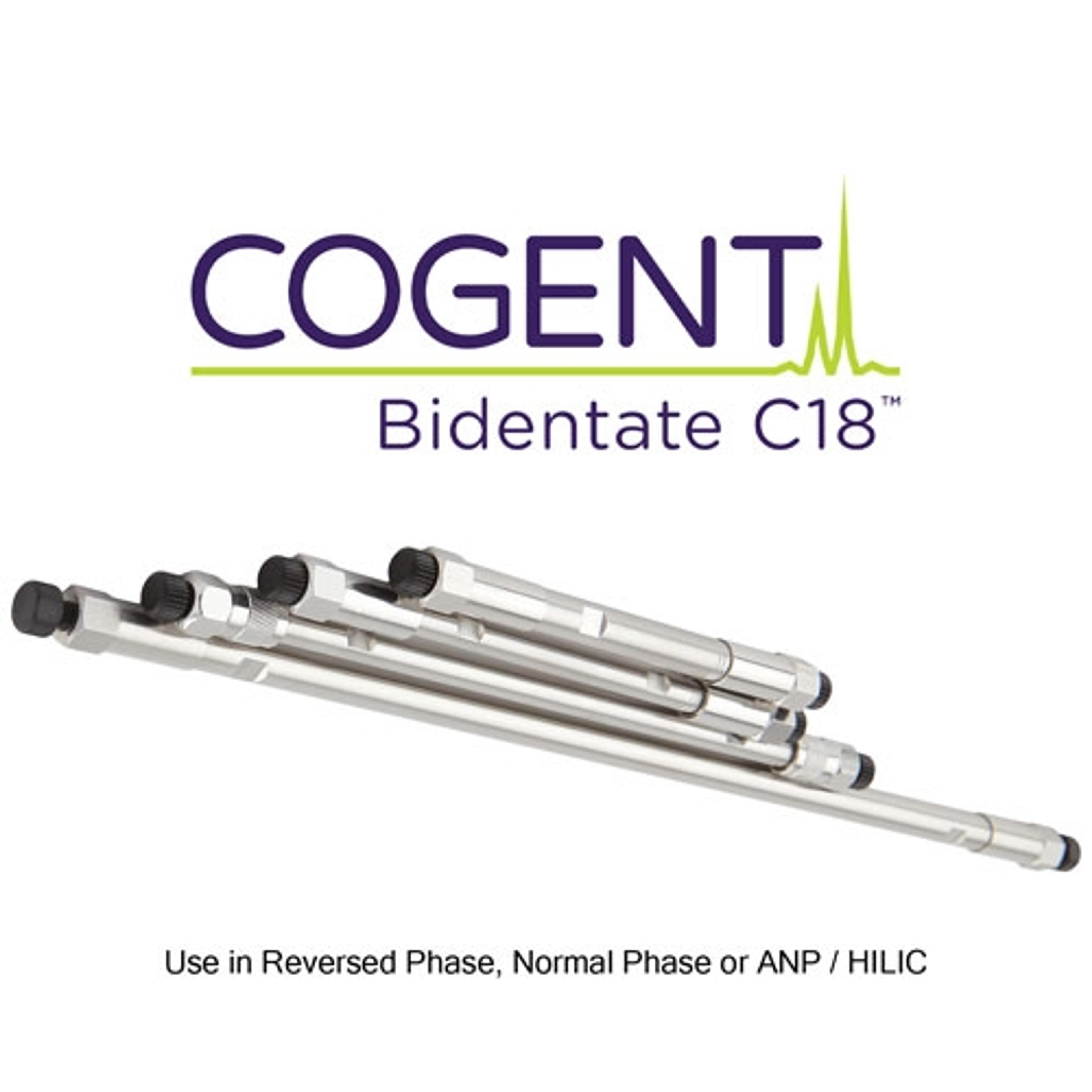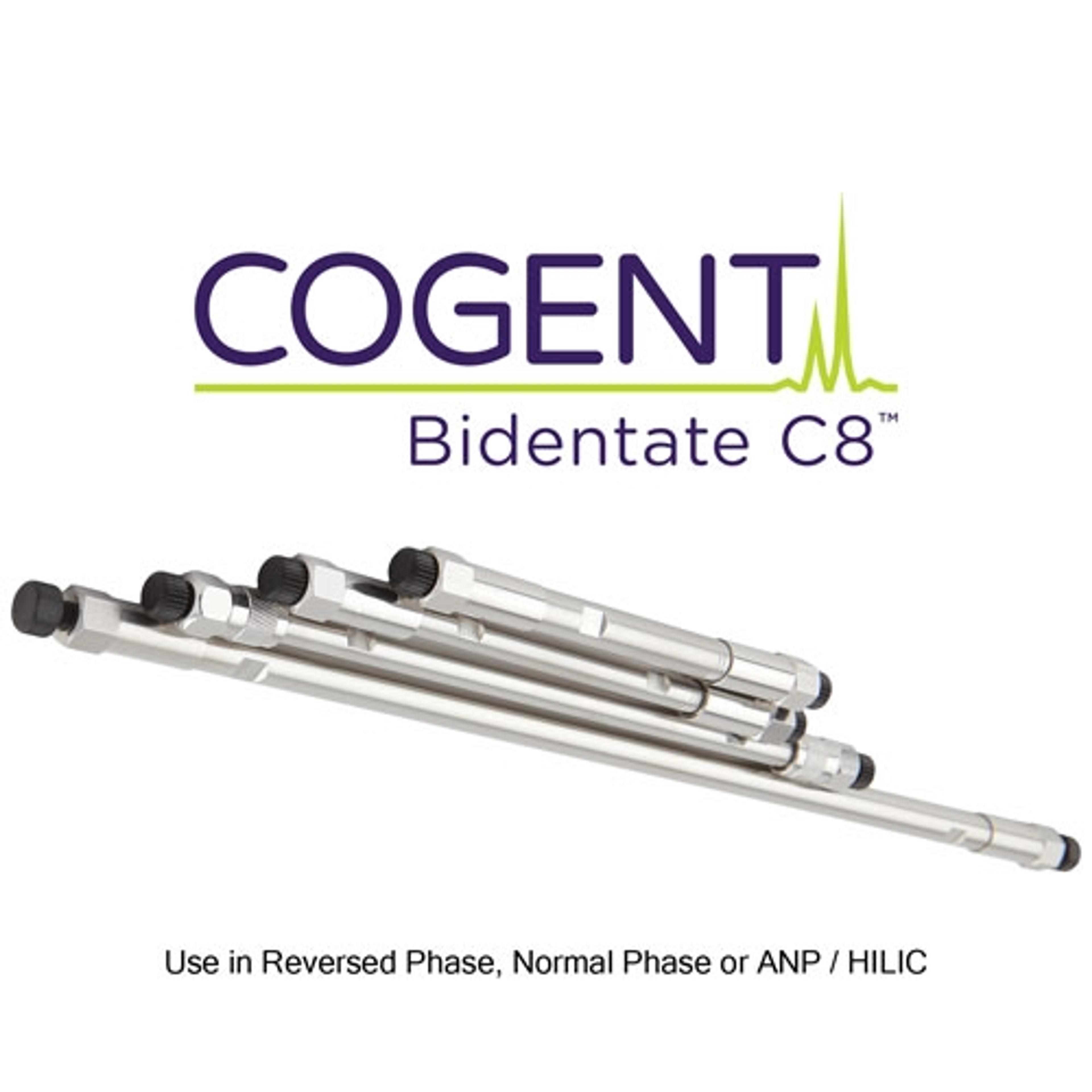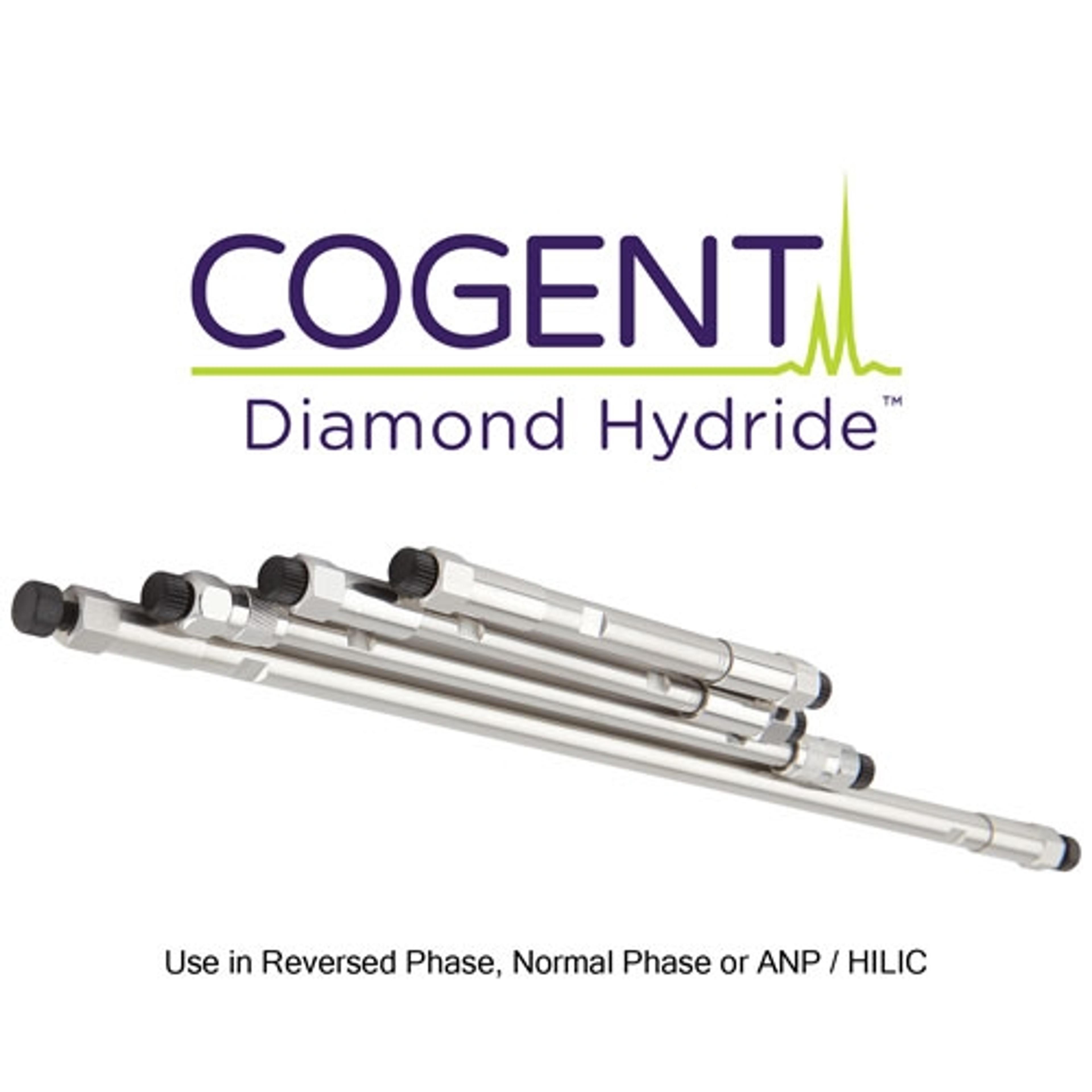Advances in HPLC: Silica Hydride Columns
25 Nov 2014
Traditional HPLC columns are made up of ordinary silica populated with silanols (Si-OH), which have a high affinity for associating with water. This is problematic during chromatography as a 'hydration shell' of absorbed water forms on the surface of the silica that interferes with the separation and analysis of samples. TYPE-C™ silica is populated with silicon hydrides (Si-H) that exhibit significantly less affinity for water and are slightly hydrophobic.
Direct Silicon-Carbon Bonds
Bonded phases, such as C18, C8, cholesterol, phenyl and diamond hydride attach to the silicon directly, forming silicon-carbon bonds. This direct bonding enables an unprecedented bond stability compared to traditional HPLC columns.
Solvent Selection
Due to the strong silica-carbon bonds, the Cogent TYPE-C™ columns can function using a number of different solvents. All TYPE-C™ columns can operate in three modes of chromatography:
- Reverse Phase Chromatography
- Normal Phase Chromatography
- Aqueous Normal Phase (ANP) Chromatography - this is normal phase chromatography with reverse phase solvents
Long Column Lifetime
TYPE-C™ columns enable you to perform more experimental runs per hour compared to traditional HPLC columns. It is possible to use the same column for polar, non-polar and a mixture of compounds by changing solvents with ease. The long lifetime of the columns not only saves costs, but also saves time, with fewer in situ failures and repeated runs.
Top 10 reasons to use TYPE-C™ columns:
HPLC is expensive
Increased selectivity
Increased precision
Orthogonality within one column
Robust methods with fast equilibrium
Long column lifetime
Use singular mobile phases
Fast method development
Work with water liable compounds of NP with ease
Get technology competitive



